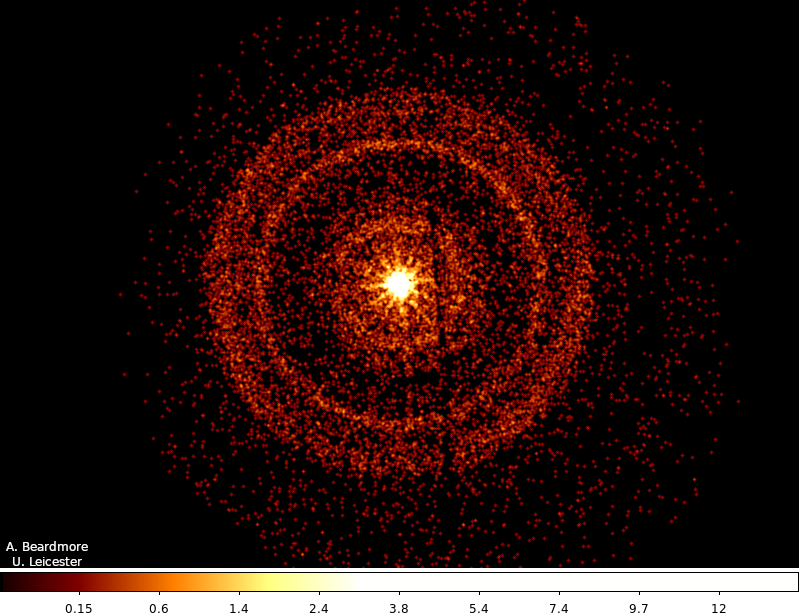On the afternoon of Sunday 9th October, the Burst Alert Telescope (BAT) onboard Swift triggered on a new and incredibly bright gamma-ray source – write Kim Page, Andy Beardmore and Phil Evans.
This first trigger was followed, about seven minutes later, by a second trigger on the same source.

A double trigger such as this is not expected from your common-or-garden Gamma-Ray Burst (GRB), so the source was initially thought to be a Galactic transient, and given the name Swift J1913.1+1946 based on its coordinates. However, it soon became apparent that this same source had actually been detected by the Fermi Gamma-Ray Burst Monitor almost an hour before the BAT trigger – and turned out to be the brightest GRB they have ever detected!
Together with the fading X-ray light-curve seen with the Swift X-ray telescope (XRT), this all pointed towards the source being a GRB after all – but an extremely bright one! GRB 221009A, as it is now known, has been detected all the way across the electromagnetic spectrum, from radio wavelengths, to optical (despite its location being fairly close to the Galactic Plane, meaning there is significant extinction) and all the way up to TeV energies (the first detection of a GRB above 10 TeV ever, and even a 250-TeV photon-like air shower!).
The burst has been measured to be at a redshift of z = 0.151 (a distance of about 2 billion light years), which is practically in our neighbourhood for GRBs (which have a mean redshift of ~2). Being relatively close by is a big part of what made it so bright as seen by telescopes round Earth; its intrinsic luminosity is not abnormal, but the flux reaching the detectors is, as Dr Phil Evans tweeted, stupidly really bright!
Not only do we have huge numbers of photons to play with, GRB 221009A also led to a very impressive set of dust rings, also known as a dust-scattering halo. When you have a bright X-ray source, but you have to look through lots of gas and dust in the Milky Way to see it (and with GRB 221009A being close to the Galactic Plane, this is certainly the case), then there is a good chance you’ll see the effects of dust-scattering imprinted on the X-ray data, as X-rays which would normally not be heading in our direction are scattered back towards us and can be seen. In the case of a bright, flaring source, like this GRB, simple geometry shows that any density enhancements of dust in the interstellar medium will form a ring of scattered X-rays (the ‘light echoes’) which expand with time in a very predictable manner (square root of time since flare).
Dr Andy Beardmore first realised there was a halo from the 1-dimensional readout mode the XRT operates in when the source being observed is bright, by noticing that the emission profile was extended, and not what we would expect from a point source. He therefore requested that we use the 2-dimensional mode, even though the central source was still very bright, to image the expected rings – and this led to the fantastic image shown. Swift is continuing to observe GRB 221009A, and each day we can see the rings have expanded outwards.
So, what will we be able to learn from this unprecedented GRB? Because the source is so bright, we will be able to look in detail at the data, time-slicing them into smaller chunks to see how the emission at different wavelengths is evolving as time progresses. The halo will allow us to investigate the distance to the responsible dust layers to great precision. There’s already a lot of buzz about the TeV detections, since such photons should be completely attenuated before reaching the Earth when coming from such a distance. What we’re seeing does not seem to be explainable by conventional physics, so there’s lots for the theorists to get their teeth into!

 Subscribe to Physics & Astronomy's posts
Subscribe to Physics & Astronomy's posts
Recent Comments